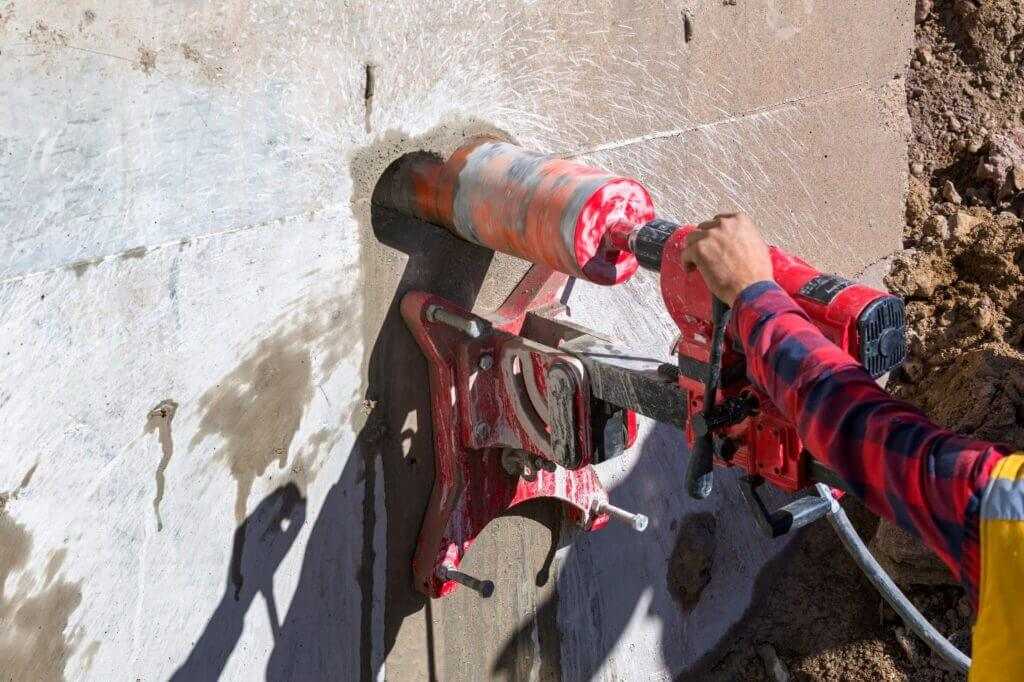Tips for Concrete Core Drilling

Concrete core drilling is necessary for many commercial and industrial construction projects. Whether you’re preparing to install plumbing or phone lines or need to perform structural tests, understanding the core drilling process is important for a job well done. If you attempt to complete the work yourself, follow these essential tips on core drilling equipment, techniques, and safety to ensure your project’s success.
Choose the Right Equipment
- Drill type: Handheld drills are sufficient for drilling holes up to three inches in diameter. Rig-mounted drills provide the stability and power needed for drilling larger holes. Some models can switch between handheld and stand-mounted configurations to cater to various jobs.
- Drill motor: Electric motors are ideal for indoor use since they don’t emit fumes. Hydraulic motors are preferred for their high power output, suitable for larger and more demanding drilling tasks, especially outdoors. Air-powered motors are useful in explosive or flammable environments where electrical sparks pose a risk.
- Stand attachment: Vacuum stands use suction to secure the drill in place, making them ideal for horizontal or slightly angled surfaces. Wall anchors may be necessary for vertical or steeply angled drilling tasks. In both cases, safety chains should be used to prevent accidental slippage.
- Drill bit: Diamond-tipped bits are the industry standard because of their durability and cutting efficiency. These bits are made from heat-cured industrial diamonds and metallic powder. Softer bonded bits are better suited for drilling through hard materials, as they allow for faster wear and quicker exposure of new cutting surfaces. Conversely, harder bonded bits are ideal for softer materials, where minimal wear is required to maintain the bit’s effectiveness.
Use the Right Core Drilling Techniques
- Secure the drill: Always secure the drill rig to prevent movement that could lead to inaccurate drilling or accidents.
- Start with a guide: Use a guide or template to start the drill bit accurately and prevent it from wandering.
- Water feeding: Keep the drill bit cool and reduce dust with water, especially when drilling deeper holes.
- Optimal speed: Do not exceed the recommended core drilling speed to avoid overheating the bit. Monitor the core drilling depth and adjust the speed accordingly.
- Correct core removal: When drilling is complete, remove the core carefully to avoid breaking either the core or the bit.
Maintain Job Site Safety
- Proper training: No untrained individual should attempt concrete core drilling. Ensure all operators have the appropriate training and understand the equipment’s operating procedures.
- Protective gear: Wear the recommended personal protective equipment while operating a concrete core drill or working nearby. This includes gloves, goggles, ear protection, and a dust mask.
- Regular maintenance: Check and maintain your drilling equipment regularly. Look for signs of wear on drill bits and replace them as needed.
When to Hire a Professional
While DIY core drilling might seem cost-effective, hiring a professional like Ashton Sawing and Drilling LLC is the more reliable choice. With over 20 years in the business, we are industry leaders trusted by commercial and industrial clients across Texas and Louisiana. Our team is equipped with the latest tools and adheres to the highest safety standards to handle projects of any size. For top-notch concrete core drilling or other concrete services in Dallas, Houston, New Orleans, or Baton Rouge, please contact us today.
